Project Engagement (v2.1) as an Innovation Approach
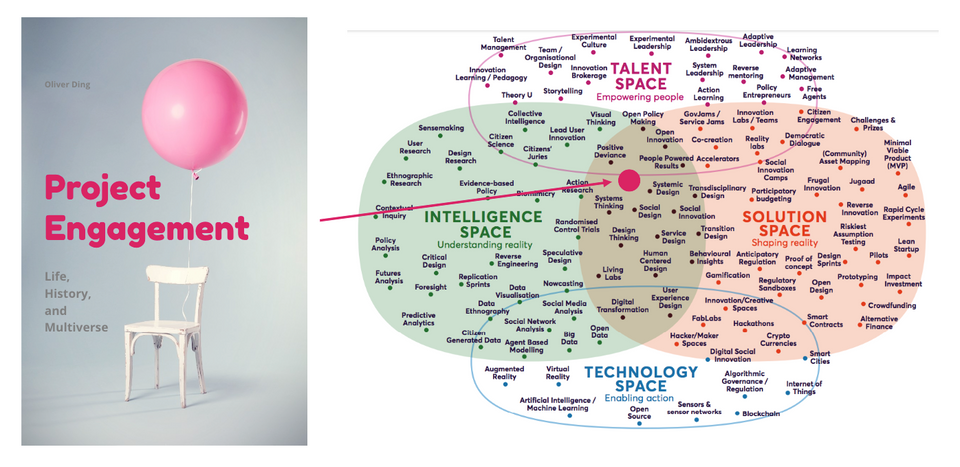
On July 20, 2022, I started writing an introduction to the Project Engagement approach (v2.0) in Chinese. The thesis was finished on July 30, 2022.
It's a 116-page file with the following three keywords: Significance, Complexity, and Genidentity.
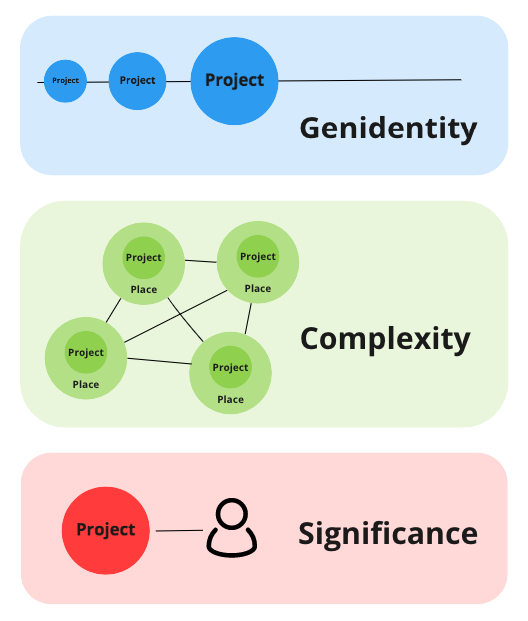
The thesis was organized into the following five parts:
- Part 1: Project, Projecting, and Activity
- Part 2: Significance
- Part 3: Complexity
- Part 4: Genidentity
- Part 5: Rethinking Activity Theory
Initially, I used the term "Project Engagement" to name the second part of my 2020/2021 book Project-oriented Activity Theory which introduces Andy Blunden's "project as a unit of analysis of activity" to Activity Theory. I summarized Andy Blunden's ideas and the historical development of Activity Theory in Part 1 (Project, Projecting, and Activity).
Part 2 (Significance) introduces two frameworks and one method which are about the "Person - Project" relationship. Why does a person start or join a project? What does a project look like? These three modules were originally introduced in the second part of Project-oriented Activity Theory. In fact, I call them Project Engagement (v1.0). Two frameworks are Developmental Project Model and Zone of Project. The method is called Cultural Projection Analysis.
The goal of the thesis is to sort my new ideas about the approach. Part 3 (Complexity) focuses on the complexity of Project Network. How does the network of projects represent the dynamics of individual life and social life? From Jan 2022 to June 2022, I worked on testing Project Engagement (v1.0) and realized that I should expand it to the "Project - Project" relationship. The following six parts were introduced in Part 3:
- Activity Landscape Analysis
- Project Network
- Thematic Spaces
- Mapping Project Network
- Significant Insights Analysis
- Life-History Topology
Part 4 (Genidentity) is not part of my original plan. It was born from the journey of writing the thesis. The term "Genidentity" refers to the transformation from a theme to a project, then a platform. How does a project keep its uniqueness?
This idea is a Significant Insight because I realized that I can detach the Platform Genidentity framework from the Platform Ecology project, and attach it to the Project Engagement approach.
Why did I make this decision? How did I discover this Attachance (the value and meaning of Attaching acts and Detaching acts)?
First, I asked myself the following question:
Now, I have v1.0 and v2.0. What about v3.0?
Second, I used a new idea I learned recently to frame this question for my answer.
I am recently reading a book titled The Scientific Project of Sociology (Ping-keung Lui, 2010) which is the second series of lectures on sociology-philosophy, taught in a course for MA(Part-time) students at the Department of Philosophy, The Chinese University of Hong Kong, Fall 2010. Its original title was “The Philosophers, the Sociologists, and the Scientific Project of Sociology”.
Ping-keung Lui aims to build a brand new theoretical sociology as a candidate for the paradigm of sociology. According to Lui, “There are three kinds of theories in sociology, namely, social theory, sociological theory, and theoretical sociology. ”
Lui developed his account in two steps. First, he curated some theories in sociology and philosophy for his lectures by selecting, quoting, analyzing, and discussing. Second, he created his own perspective by reflecting and responding to these theories. This is an amazing example of Curativity as Creativity.
To be honest, it is a challenge to read this book for me. However, it offers me a guide to reading some social theoretical thinkers such as Schutz, Giddens, Bourdieu, Goffman, etc.
Moreover, his theoretical sociology offers me a meta-theoretical framework for reflecting on the development of the Project Engagement approach.
There are three focuses in his account: subjectivity, intersubjectivity, and otherness. I used these three focuses to frame my question.
- V1: the "Person - Project" relationship is about Subjectivity.
- V2: the "Project Network" complexity is about Intersubjectivity.
- V3: the "X" ... should be about Otherness.
Lui uses the term Otherness to refer to "non-human others" such as Society, Death, etc. For the Project Engagement approach, It seems the notion of "Genidentity/From Project to Platform" echoes the focus of Otherness.
In this way, I imagined the v3 and found a solution, and used the solution to expand the v2.
Now I have v2.1 and the approach has multiple levels.
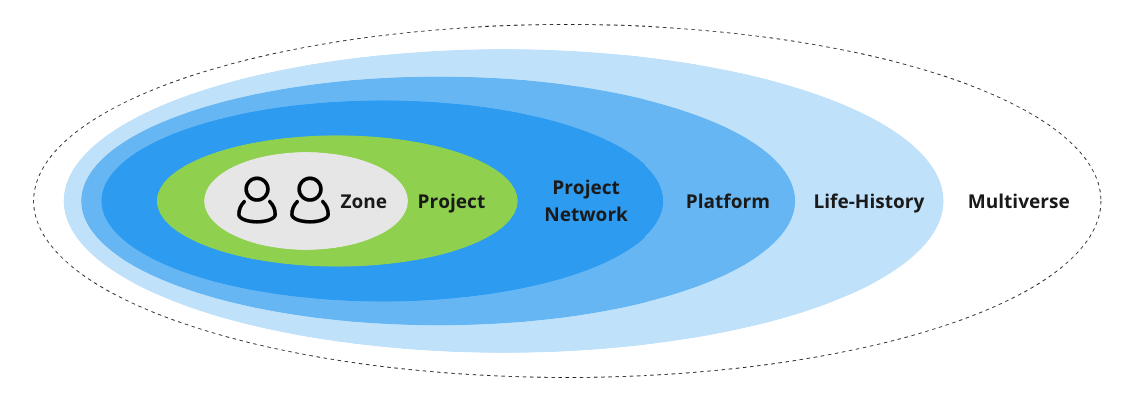
It also has the following slogan:
Life = Projects = Thematic Spaces = Events = History
The thesis also has a cover:
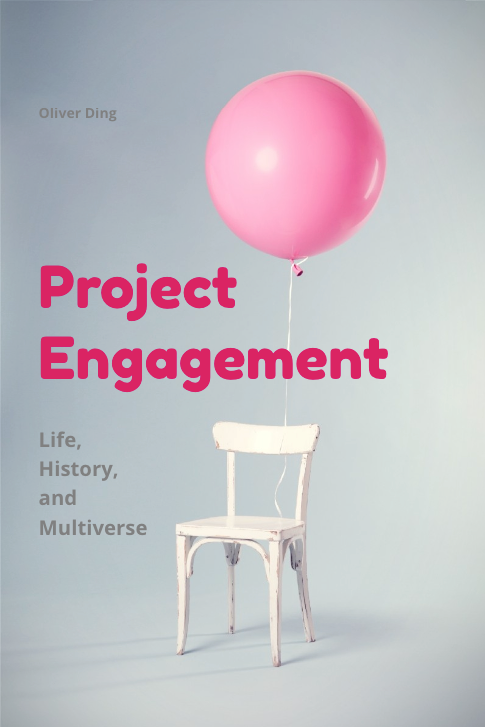
The last part of the thesis is titled Rethinking Activity Theory which was inspired by the following question:
Is Activity Theory a Sociological Theory?
According to Lui, “There are three kinds of theories in sociology, namely, social theory, sociological theory, and theoretical sociology. ”
- Social theories are speculations about the social world. They constitute the speculative project of sociology.
- Some social theories are amenable to positivistic investigation under certain specific conditions. I call them sociological theories.
- Also, some other social theories, being very ambitious, attempt to recruit as many as they can sociological theories supporting themselves. I call them theoretical sociologies. They compete against each other. The winner becomes the paradigm of sociology, and its supporting sociological theories become exemplars of the paradigm. In this way, theoretical sociologies and sociological theories constitute the scientific project of sociology.
One month ago, I had a short chat with Lui about the term “Social theories”. In fact, he considers all “Social Thoughts”, “Logs”, and “Ideology” as “Social theories”. For example, a political party’s ideology and a professional community’s knowledge framework are “Social theories” from his perspective.
It’s not easy to answer the question because there are many branches of Activity Theory. In fact, the term “Activity Theory” is not an official name for a particular theoretical account. People just use it as a name to refer to a family of similar approaches.
In the past two decades, scholars also used “Cultural-historical Activity Theory” (CHAT) to refer to a set of approaches and expanded the focus from psychology to multiple disciplines. According to Manolis Dafermos (2015), “A multidisciplinary approach to activity theory has developed at the Center for Activity Theory and Developmental Work Research (University of Finland, Helsinki) led by Yrjö Engeström. Vygotsky, Luria, and Leontiev worked in the context of psychology as a discipline, while the representatives of CHAT developed a multidisciplinary research program.”
In a 2019 paper that reviewed the development of Yrjö Engeström’s account, Clay Spinuzzi claimed that the account “was arguably closer to an organizational sociology. This organizational sociology is specifically oriented to interventionist research: i.e., the consensus-driven codesign of systems of collective action.”
Thus, I started re-read Clay Spinuzzi’s papers about the historical development of Yrjö Engeström’s Activity System model and expansive learning model.
Part 5 of the thesis is the outcome o re-learning Activity Theory. I discovered the following pairs of keywords for discussions:
- Concepts and Themes
- Project and Platform
- Culture and History
- Context and Settings
Finally, I made a "meta-framework" for the Project Engagement approach (v2.0). See the picture below.
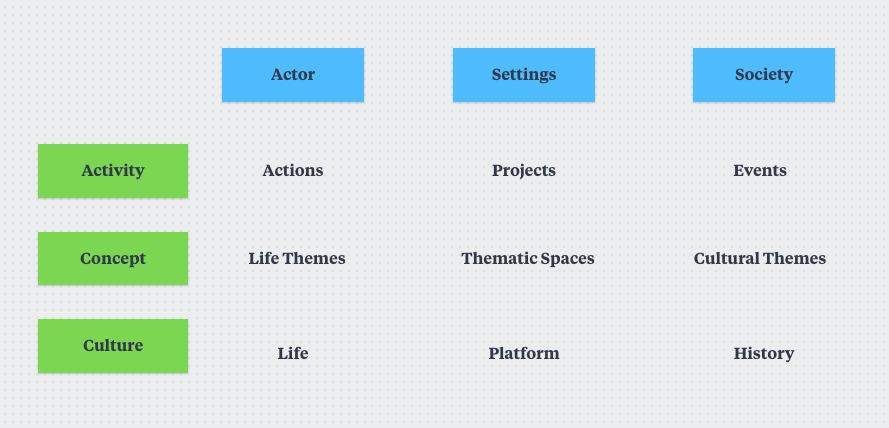
The meta-framework is formed with two sets of keywords:
- Activity, Concept, Culture: this set of keywords is discovered from Andy Blunden's approach.
- Actor, Settings, Society: this set of keywords is discovered from the Project Engagement approach.
I also highlight nine theoretical concepts of the Project Engagement approach (v2.0).
An Innovation Approach
Is the Project Engagement approach (v2.0) a sociological theory? I am not sure.
I think it is a social theory about the innovation of social life.
The diagram below was made by Nesta. You can find more details about it in Landscape of Innovation Approaches.
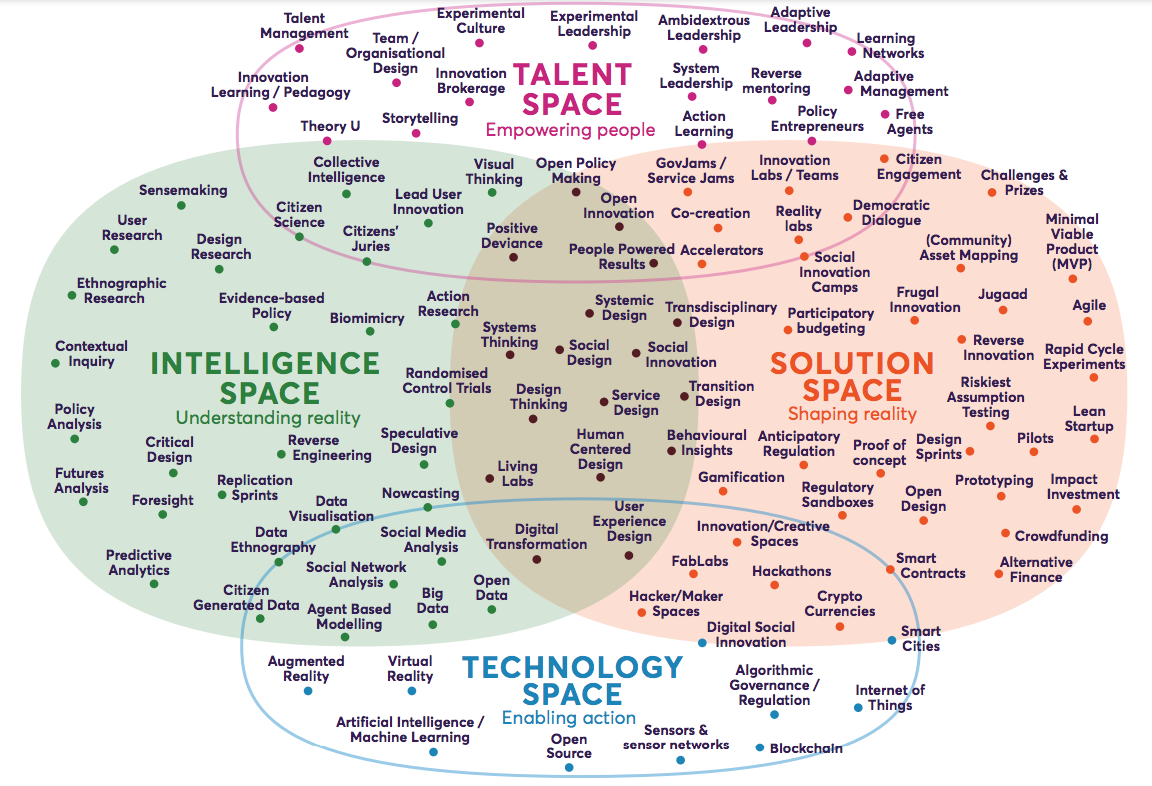
The about diagram is a great job of thematic curation. Each innovation approach can be understood as a thematic space with a primary theme.
What about the Project Engagement approach (v2)?
The "Project Engagement" is a radical innovation approach because it follows Project-oriented Activity Theory which considers a Project as an Activity of the social formation of a Concept.
For example, the TEDx project is a radical innovation because it creates a new concept: Independently Organized [BRAND] Events. This is an archetype of the Open Brand Movement.
Activity U (VIIII): Project-oriented Activity Theory
https://lnkd.in/gWDhhrA8
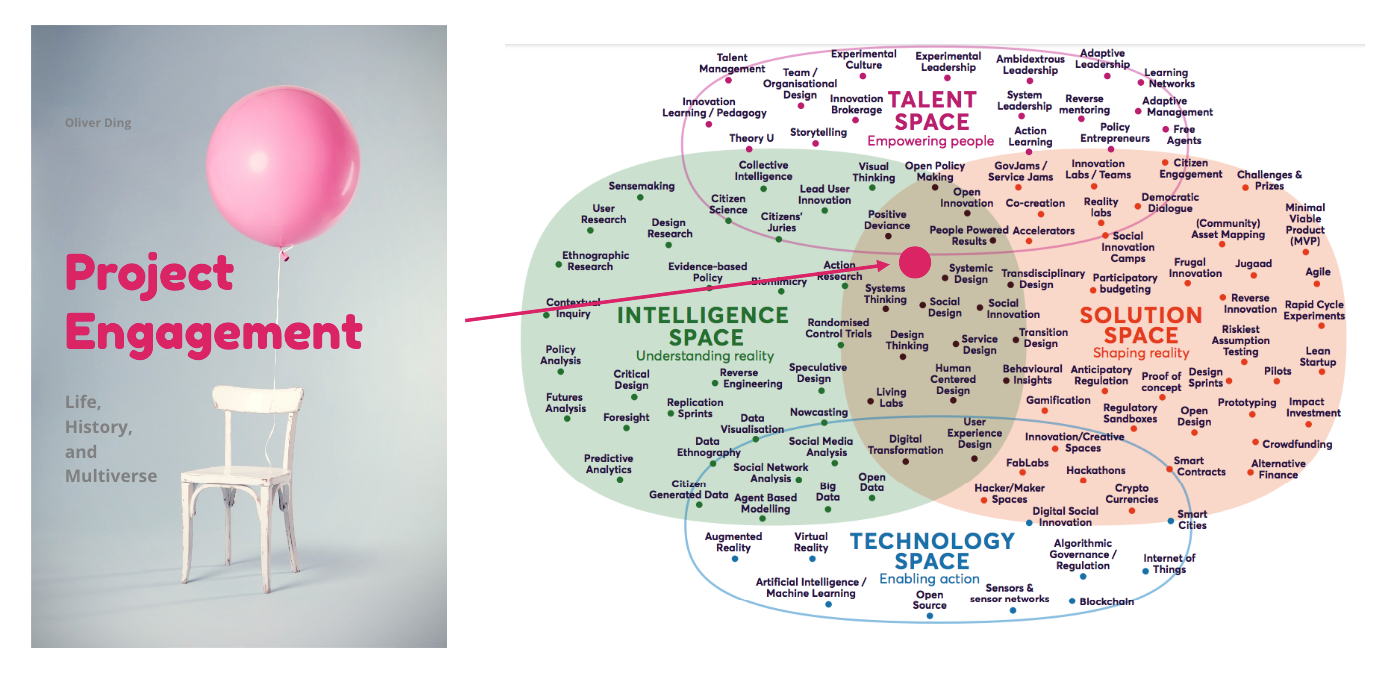
Let's add the Project Engagement approach (v2.0) to the landscape of innovation approaches.
Related Articles
Though the thesis was written in Chinese. You can find most ideas in the following articles which were written in English:
Project Engagement (v1.0)
Part 1: Project, Projecting, and Activity
- Project-oriented Activity Theory (Book)
- Activity U : The Landscape of Activity Theory (Part I)
- Activity U (VIII): Project as a Unit of Activity
- Activity U (VIIII): Project-oriented Activity Theory
Part 2: Significance
- The Developmental Project Model
- Developmental Project Canvas
- Activity U (X): Projecting, Projectivity, and Cultural Projection
- Life Discovery: Running A Developmental Project
- Life Discovery: The Life-as-Project Approach
Part 3: Complexity
- Project Engagement (v2): Life, History, and Multiverse
- Life Discovery: “Formation of Concepts” and “Themes of Practice”
- Life Strategy: Moving between Thematic Spaces
- Life Discovery: “Points of Observation” and “Significant Insights”
